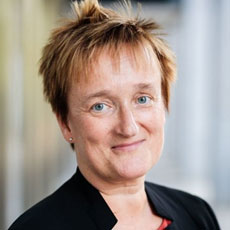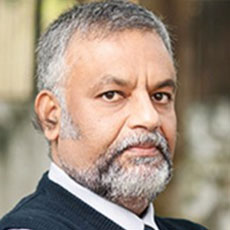
Date 6th September 2021
Time 12:30 – 13:00 (IST) / 9:00 – 9:30 (CET)
Prof. Dr.-Ing. Ina Schieferdecker is Director-General for Research for Technological Sovereignty and Innovation at the Federal Ministry of Education and Research (BMBF). Initiatives related to modern key technologies including for example quantum technologies, material technologies, microelectronics, communication, software and AI technologies as well as future of work and value creation are located in this directorate. Before joining the BMBF, Schieferdecker was Director of the Fraunhofer Institute for Open Communication Systems (FOKUS), Professor for Quality Engineering of Open Distributed Systems at TU Berlin and Director of the Weizenbaum Institute for the Networked Society – The German Internet Institute. She is a member of the National Academy of Science and Engineering (acatech) and has been a member of the German Advisory Council on Global Change (WBGU), the Hightech Forum 2025 (HTF), the Science Platform Sustainability 2030 and the Board of Technologiestiftung Berlin (TSB). She has received various awards for her scientific work such as the EUREKA Innovation Award and the Alfried Krupp von Bohlen und Halbach Award for Young Professors.

Date 6th September 2021
Time 12:30 – 13:00 (IST) / 9:00 – 9:30 (CET)
A PhD in Computer Engineering from Delhi College of Engineering, Delhi University and an alumnus of S V University, Tirupati. He also attended Science, Technology, Innovation and Policy (STIP) programme at Kennedy School of Govt, Harvard University, Boston, USA. He is serving the DST from 1998 onwards and presently, Dr Mohan is Mission Director, NM-ICPS and Scientist-G and Heading the Frontier & Futuristic Technology Division. He has developed number of new R&D network-based cluster initiatives. His multidisciplinary academic background coupled with multi-institutional scientific exposure spanning over 20 years provides him an edge in identifying and in conceptualizing niche scientific areas of research. At present he is working on development of National Mission on Quantum Technologies & Applications (NM-QTA). The programmes he developed/ under development, synergizes the core concepts of Big Data, Geo-Sciences, Information & Communication Technologies (GeoICT) and brings in the fundamental and applied aspect of this emerging spectrum of science. Identification of a burning national issues and scientific challenges which requires S & T interventions, development of scientific framework, institutional network/ arrangements, expertise driven holistic experimentation and core capacity building/ Critical mass creation, is the generic model followed in all his endeavors.
Some of the ongoing Big Data Initiatives are
Indian Digital Heritage (IDH-Hampi): Technology that involves computer Vision, digital image processing, terrestrial laser scanning, point cloud, 2D&3D rendering, Digital in-painting and web technologies coupled with heritage, recreated digital media for interactive visualisation. Also, created a technology platform for researchers to invent and innovate new algorithms to deal with variety of media types appropriate for capturing many types of heritage such as dance forms, poetry, oral history, rituals and festivals, etc. This work is considered as first of its kind in India and probably in world. It paved way for emergence of altogether new discipline “Computational Archeology”.
Ecosystem Restoration and Management: As of now the ecosystem management plans are driven by statistical data. Holistic approach based on Geo-information system and involving multi-institutions, multi-disciplines which are tightly interlinked in a scientific framework is the main innovative approach developed and adopted.
Hyperspectral Remote Sensing (HSRS) technologies & Applications A hyperspectral sensor, using reflected solar radiation, captures the unique spectra, or ‘spectral signature’, of an object. Analysed the potential of these technology for natural resource mapping, quantification and characterization. Formulated mechanisms to create and inventory of standard signature databases. Thus the generated spectral signature library will facilitate in analysis, interpretation and quantification of natural resources, man made objects and bio-sphere.
Sensor Networks & Web Enablement (SN&WE): Developed a scientific framework for on-line data acquisition from geo-located observational sites, applications developed and demonstrated in flood inundation, wind damage, Intelligent Transport systems, weather modeling, health, agriculture etc.
PhD work: Machine recognition of handwritten characters is still a scientific challenge and unsolved problem. Owing to its complexity and usefulness in Computer Vision, Digital Image processing, Cognitive Sciences and Natural Language Processing (NLP), this domain engaged the attention of researchers worldwide for the past four decades. Extraction of representative features from the image patterns and classification/clustering is the challenge. The work as part of the thesis explores new directions to offer with some definitive evidence-based solutions wherein the Recognition Rate (RR) of 99.8% was achieved. Also, the proposed algorithms are independent of language, considered to be a major breakthrough in OCR research.
